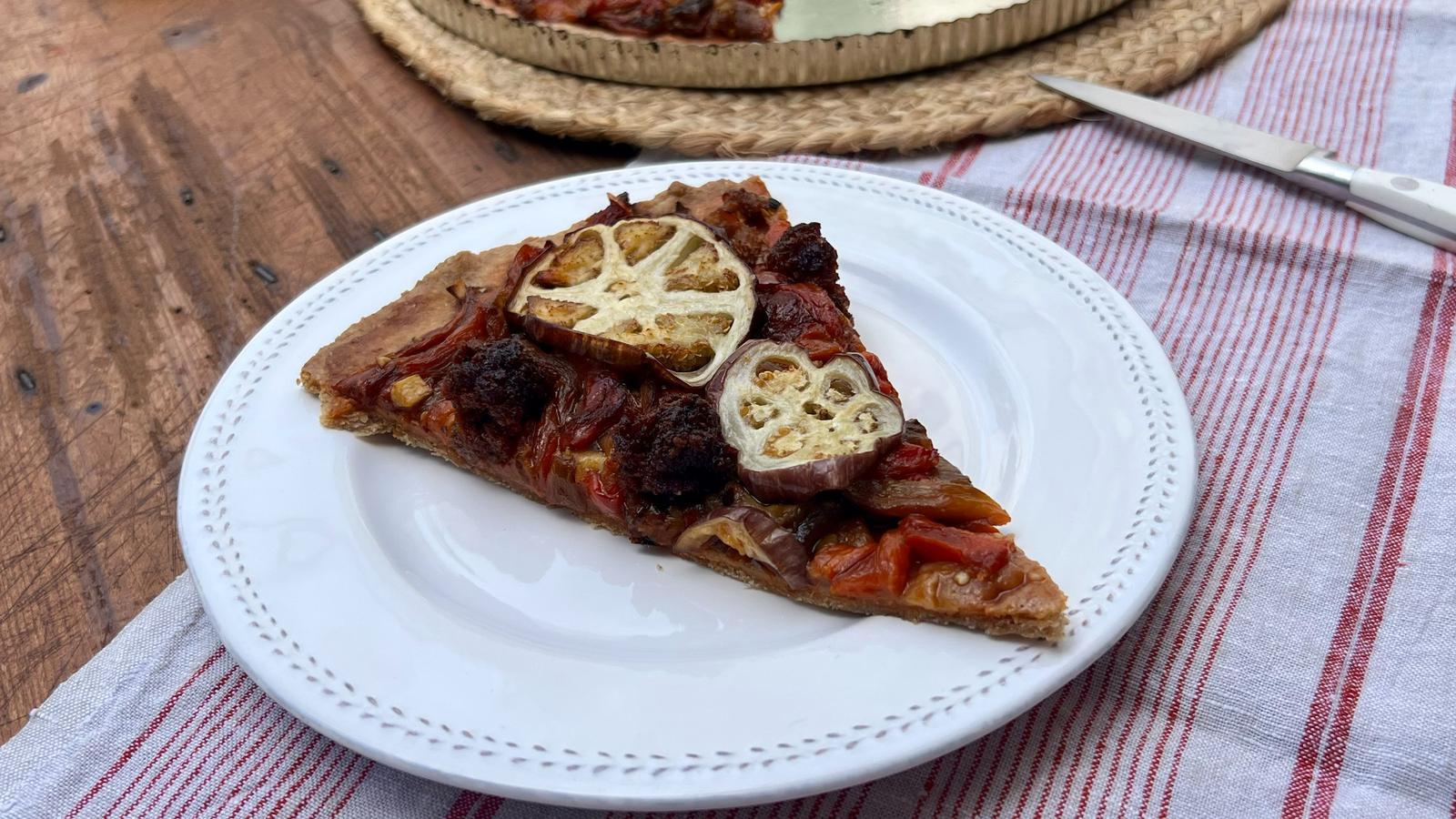How to prepare coca poblera with toasted peppers and eggplant at home
According to Antònia Mas's recipe


PalmThe cake is ours paicosa more elaborate: flour and oil in communion with the vegetables of each season. It's one of our most festive dishes, cooked to be shared, taking advantage of the fruits of the earth. It seems inevitable that I'm transported to a world of memories, to summer dinners where the main course was the excuse to gather the family while the heat mingled with conversations and darkness advanced. The godmother brandished the pasta, patiently preserving it until she spread it on the tin blackened by the oven. She acted as a templon and with toasted peppers, and thus opened the debate to see which had turned out better.
For centuries, the Mediterranean has been building a constellation of flat doughs covered with simple ingredients, but full of the flavors specific to each place. Italian pizza is the most international and ubiquitous example: a bread base covered in tomato sauce, cheese, and multiple versions of ingredients. Another example is the pissaladière, the Provençal interpretation of Italian pizza, named after the board, a pasta made with anchovies that is used to cover the dough. It is also accompanied by onion and black olives. Another sister pasta is lahmacun Turkish bread, a very thin base of bread covered with minced meat, garlic and parsley. In Lebanon they enjoy the manakish, a flatbread that is covered with zaatar, a mixture of wild herbs that can be eaten fresh or dried. Another simple and tasty gem is the Ladenia, a Greek tomato cake native to the Cyclades Islands, made with very few ingredients.
Seasonal Cakes
As for our cuisine, we have several examples of seasonal cakes. One of the most characteristic is the Menorcan tomato cake, a humble dish very common during the summer months and made with flour, olive oil, water, and a small amount of yeast. The pastry is garnished with large, ripe tomatoes cut in half or sliced, then covered with chopped garlic and parsley, peppercorns, breadcrumbs, and a pinch of sugar or honey. It can be accompanied with pinchas (herring), pickled tomatoes, or anchovies. Once assembled, the cake is baked in the oven until the pastry is lightly golden and the tomatoes have released their juice without completely losing its consistency. The result is a tasty and light dish that is often eaten cold or warm and served in groups to share at informal meals, popular festivals, or outdoor outings.
Summer produce allows us to experiment and make all kinds of cakes, from recipes with onion, fig, and sobrasada to others with just onion, pine nuts, and cheese. However, the absolute kings are the temple and pepper cakes. As with everything, every house has a recipe. I particularly like the pepper and eggplant cake from Sa Pobla because it's different from the rest. The toasted peppers are tempered separately, and the eggplant is fried and placed on top of the peppers.
Today's recipe was shared with me by Antònia Mas, my teacher when I was in fifth grade. She uses sobrasada, but other recipes I've found also include sirloin. If this is your choice, add it during the last 10 minutes of cooking time so it doesn't dry out.
l 350 g of flour
l 100 g of oil
l 150 g of beer
l 1 pinch of salt
For the filling
l 4-5 roasted peppers, peeled and seeded
12 garlic cloves
l 1-2 eggplants
l Sobrasada
We will season the peppers with the finely chopped garlic, oil, salt and good pepper.
We'll cut the eggplant into slices and fry them until they're golden brown. We'll let them drip on absorbent paper.
Mix the oil, beer, and a pinch of salt. Pour in the previously sifted flour. When the dough doesn't stick to your hands, roll it out and place it on a baking sheet. It should be thin. Pierce it all over and place it in the oven at 180°C for about 10 minutes. Remove it and add the peppers and eggplant. Add pieces of sobrasada and bake for another 30 minutes, or until the dough is cooked.
We'll remove it and let it cool. Before serving, we'll drizzle it with a thin stream of virgin olive oil.
